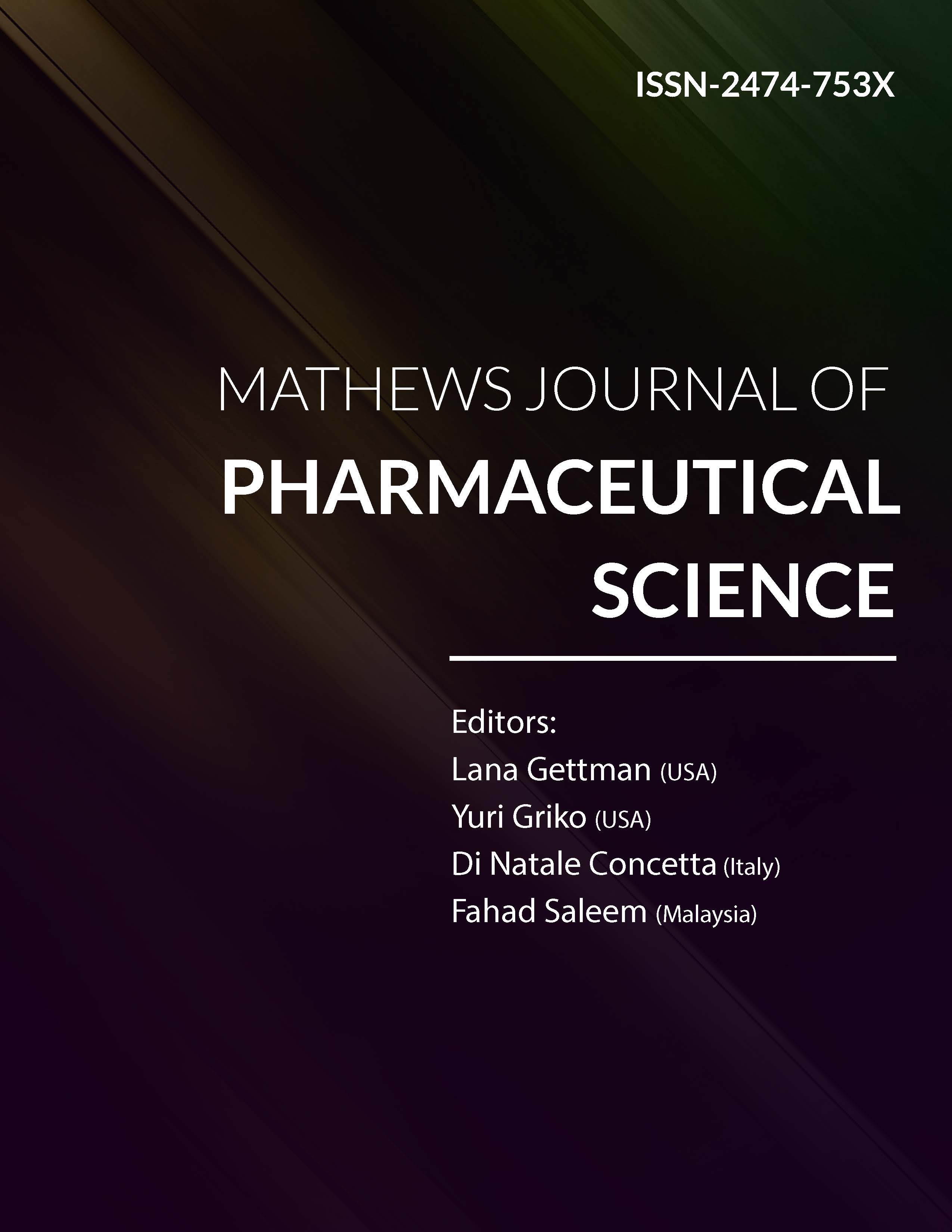
Information Links
Previous Issues Volume 7, Issue 2 - 2023
Comparative Analysis of Petrochemicals Effects on Ocular Cavity: Prevalence and Pharmaceutical Interventions in the Niger Delta, Nigeria
Nkechi J Onyeukwu1, Samuel J Bunu2,*,Tologbonse A Adedoyin1, Ngozi A Onwuka1
1Department of Pharmacology and Toxicology, Faculty of Pharmacy, University of Uyo, Uyo, Akwa Ibom, Nigeria
2Department of Pharmaceutical and Medicinal Chemistry, Faculty of Pharmacy, Niger Delta University, Wilberforce Island, Bayelsa, Nigeria
*Corresponding Author: Samuel J Bunu, Department of Pharmaceutical and Medicinal Chemistry, Faculty of Pharmacy, Niger Delta University, Wilberforce Island, Bayelsa, Nigeria; Email: [email protected]
Received Date: 10 May, 2023
Published Date: 6 June, 2023
Citation: Onyeukwu NJ, et al. (2023). Comparative Analysis of Petrochemicals Effects on Ocular Cavity: Prevalence and Pharmaceutical Interventions in the Niger Delta, Nigeria. Mathews J Pharma Sci. 7(2):20.
Copyrights: Onyeukwu NJ, et al. © (2023).
ABSTRACT
Background: The eye provides vision, can receive and process visual detail, and enables several photo response functions. Crude oil is a mix of different chemicals; it may be irritating or cause mild to severe conditions when in contact with the eyes. Aim: the study aimed to analyze the prevalence and therapeutic interventions of ocular disorders among the two communities in Southern, Ijaw, Bayelsa, Nigeria. Method: A descriptive cross-sectional design was used to describe the ocular disorders in selected crude oil-producing communities in the Niger Delta. A sample of 400 individuals from Korokorosei (200) and Amassoma (200) communities were enlisted using the convenience sampling technique; the questionnaire was administered and retrieved after filling. Results: There was a high prevalence of ocular disorders in Korokorosei than in Amassoma, and also a majority of the respondents visited the local medicine outlet to get medication in the management of ocular disorders. Respondents from Korokorosei visit the local clinic for treatment; when they had ocular disorder (11% - always, 66% - sometimes, 23%, etc.), 22% (always). 29.5% - always, 65% - sometimes, 5.5% - rarely visit the pharmacy for necessary checks and get medication to treat eye disorders, 6.5%-always, 42%-sometimes, 34%-never visit traditional healer for herbal treatment, 18.5%-always, 52%-sometimes, 29.5%-rarely visit an eye doctor for treatment, 30.5%-always, 64%-sometimes, 5.5%-rarely indicated they make effort to handle the treatment by themselves and 24%-always, 82.5%-sometimes, 5.5%-rarely also said they buy medicines from drug sellers in vehicles and open market to handle their eye problem. Conclusion: The prevalence of ocular diseases and related problem were seen more in the oil-producing community than in the non-oil-producing community, and pharmaceutical intervention in these communities was very minimal.
Keywords: crude oil, ocular, eye, vision, prevalence, pharmaceutical care, intervention